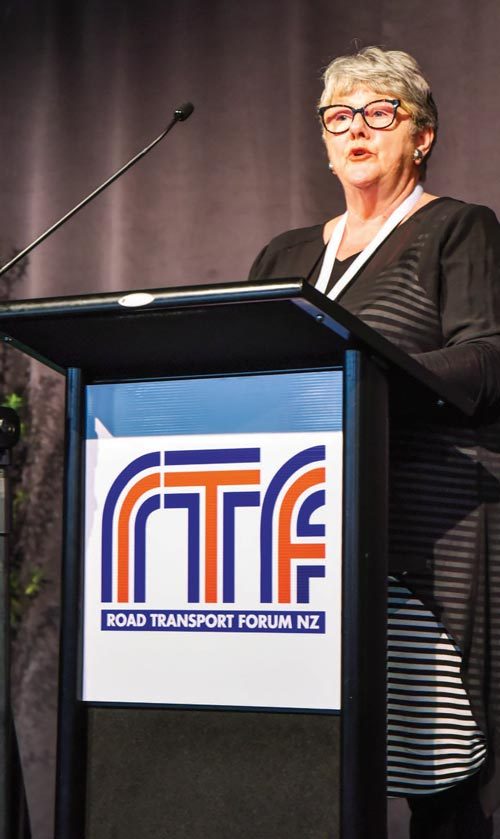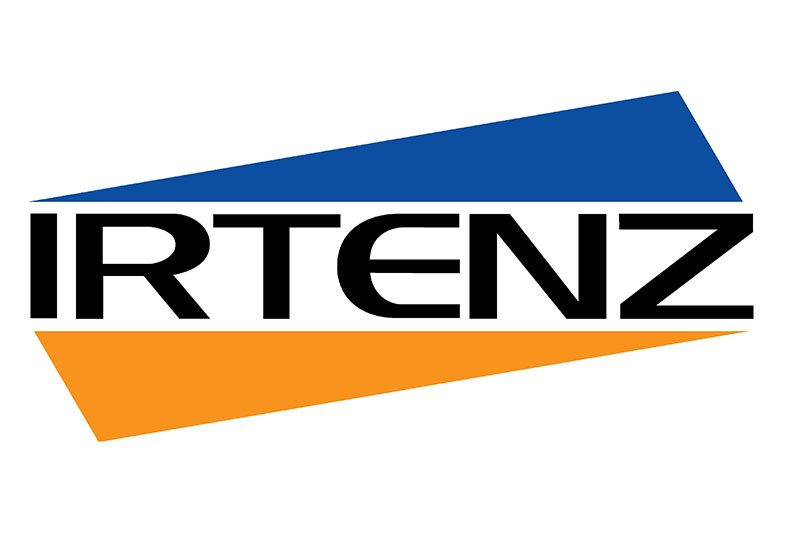IRTENZ CONFERENCE 2019 – Adapt or die?
What can the industry do to safeguard its future, ensure a steady supply of drivers, and keep the wheels turning?
 Photo: Margaret Kouvelis says that it‘s not up to young people to change to fit into the workplace, the workplace needs to change to attract them.
Photo: Margaret Kouvelis says that it‘s not up to young people to change to fit into the workplace, the workplace needs to change to attract them.
The title of Talent Central CEO Margaret Kouvelis‘ presentation at the RTF conference last September was ‘Young people don‘t need to change, businesses do‘. Kouvelis said everyone knew the numbers, that the amount of freight carried on our roads has increased 60% since 2000, but the number of drivers with class 5 licences has only increased 10%. “We know that up to 2042 there‘ll be very little change in modal share, and that over 90% of freight tonnage will still travel by trucks. And we know we‘re going to need 2800 truck drivers every year for the next 10 years.”
The current methods of attracting and recruiting have not been successful, said Kouvelis, and even when a young person does get qualified, they often can‘t get a job because they haven‘t got enough experience. “That yawning gap in recruiting drivers is an economic risk for a country that‘s reliant on exports to move its products around the regions and beyond.” The industry has been relying on tertiary providers and regional groups to supply the drivers, but Kouvelis said this has been problematic.
“Courses aren‘t always what the industry wants or where they want them. And they can be discontinued if the numbers don‘t stack up, regardless of the time and effort or impact that it has on the industry. Plus, these groups are often segregated and regionalised, which means there‘s no national consistency.” Kouvelis said with freight volumes rising and the lag in training industry-ready drivers, there needed to be a unified industry effort. Talent Central has made the logistics and distribution sector a priority in building pathways from school to employment.
“One in seven people in Palmerston North and the Manawatu is employed in the transport and logistics sector, and I want to ensure that we can attract and retain the right people sustainably. Talent Central collaborates with education and industry to provide work-ready youth and youth-ready employers. We foster a culture of innovation and growth leadership skills within the region, and our energy goes into creating pathways for learners.”
Last year 700 students attended the transport industry JobFEST organised by Talent Central at Manfeild Park. “If we really want work-ready young people, it‘s not good enough just to connect the odd school leaver with a potential job in a warehouse or transport firm. That‘s only going to be good for that student and that company in that particular year. What we need is a scalable and sustainable pipeline of talent that‘s been made aware of the skills required in the sector, and is responsive to the demands locally, regionally and nationally.” Kouvelis said the right preparation and training needs to be comprehensive, and that having a driver‘s licence was fundamental to employability, not just in the transport industry.
In 2018 the government provided $2.8 million of funding for the Manfeild Park Trust to develop its National Driver Training Centre, which will teach classes one through five. In addition to helping Manfeild develop the centre, Talent Central has been working with SWEP, the Ministry of Social Development, and NZTA in establishing a skills hub to be situated alongside the NDTC to provide training and skills for the workforce needed for big regional projects such as the replacement route for the Manawatu Gorge. “The training that can be accessed through the National Driver Training Centre will enable the hub to place people in positions where the skill shortage is greatest. Such a facility ensures a steady pipeline of talent for all kinds of projects.” To manage the supply in the long term, Kouvelis said the secret is in implementing these pathways at school, where students can gain an understanding of logistics and distribution through a number of hands-on experiences. She said successful implementation is also about collaboration: schools, industries, the ministries, agencies, all working together.
“The Manawatu is a key logistics hub with an inland port, huge warehouse sector, and significant truck fleet, so it‘s well positioned to offer a national training programme focusing on supporting the sector. We need a clear training pathway designed and approved by people in the industry, which would need to undergo a rigorous review by a representative group of transport operators to ensure it‘s fit for purpose.” Admitting she is not a truck driver, Kouvelis refers to herself as a cheerleader for trucks, and said everyone needed to work together to change the perception of the transport industry. “The agriculture industry is very similar to your industry with the problems of perception and attracting young people. Kids are being told in school, ‘if you‘re not up to much, then you can always drive a truck or milk a cow‘. We do moan a lot about the shortages, but we need to think outside the box; we need to collaborate and find a solution.
We don‘t like it when we train somebody up as an apprentice and they bugger off to another company that pays them more. But it‘s not just about losing that person from your firm – another firm has gained them, so we have to think collaboratively about the whole sector and about the whole of the supply chain.” The driver shortage is a longstanding issue, yet Kouvelis said no industry-wide plan has emerged and there has been no real national move to recruit new drivers. “When you see it only as a man‘s job, a temporary collar behind the wheel and not more expansive opportunities being part of a valuable supply chain, we diminish the opportunities that it can create for young people to be attracted to the industry.”
Kouvelis said an RTF survey about five years ago found that 85% of 150 transport firms nationwide lacked drivers. Auckland, often the hardest hit, estimated a shortage of 500 drivers in the region alone at the time. “There are a lot of young people out there who‘d love to learn to drive a truck. There are lots of young women out there who would make fabulous drivers. One of the biggest barriers to getting women into the trucking industry is the stereotype that it‘s only a man‘s job, and you don‘t have to be that bright. How ridiculous.
Where is the message that the trucks today are highly technical, that the way of driving them is much more skilful with all the systems on board, and that you do need to be smarter for the kind of jobs that are involved? “Given our labour crisis, what are we doing to attract girls into the industry? Currently, only 3% of the truck drivers in New Zealand are women. The fact that the majority of truck runs in New Zealand take less than a day and have set schedules with predictable home times gives New Zealand trucking companies the ability to offer younger women a career in trucking.
“Here‘s a challenge: when you look at your team, who‘s not there, and what might be wrong with your firm that they‘re not there, and what might you want to do to put this right?” Kouvelis said one of the unique challenges we have in New Zealand is that 85% of the 4500 trucking companies are small businesses, with fewer than five trucks. “Young people don‘t need to change, but we do. They‘re wired for change. They know how to adjust quickly to new things, new ways of behaving. And they respond to a culture that cares. They‘re quick to spot exploitation mind you, and bullying, and sexual harassment. They want a top-flight training, to feel confident, and to know what‘s expected of them. And a buddy system can often be a great way to settle them into a job.
“So, are we up for it? Are we prepared to change our thinking and our ways, to invite young people to consider a future in our industry? Are we willing to commit to find a unified approach to making them work ready through a properly resourced, nationally recognised training pathway? Then, rather than focusing on our yesterdays and how we‘ve always done things, we will know we‘ve succeeded if the young people of tomorrow can say that we cared about their futures today. If that happens, I believe we‘ll be well on the way to having created a long-term sustainable pipeline of talent.”
Read more
IRTENZ Conference 2023 – PBS
0 Comments12 Minutes
IRTENZ Conference 2023
0 Comments12 Minutes
IRTENZ Conference 2023
0 Comments20 Minutes


